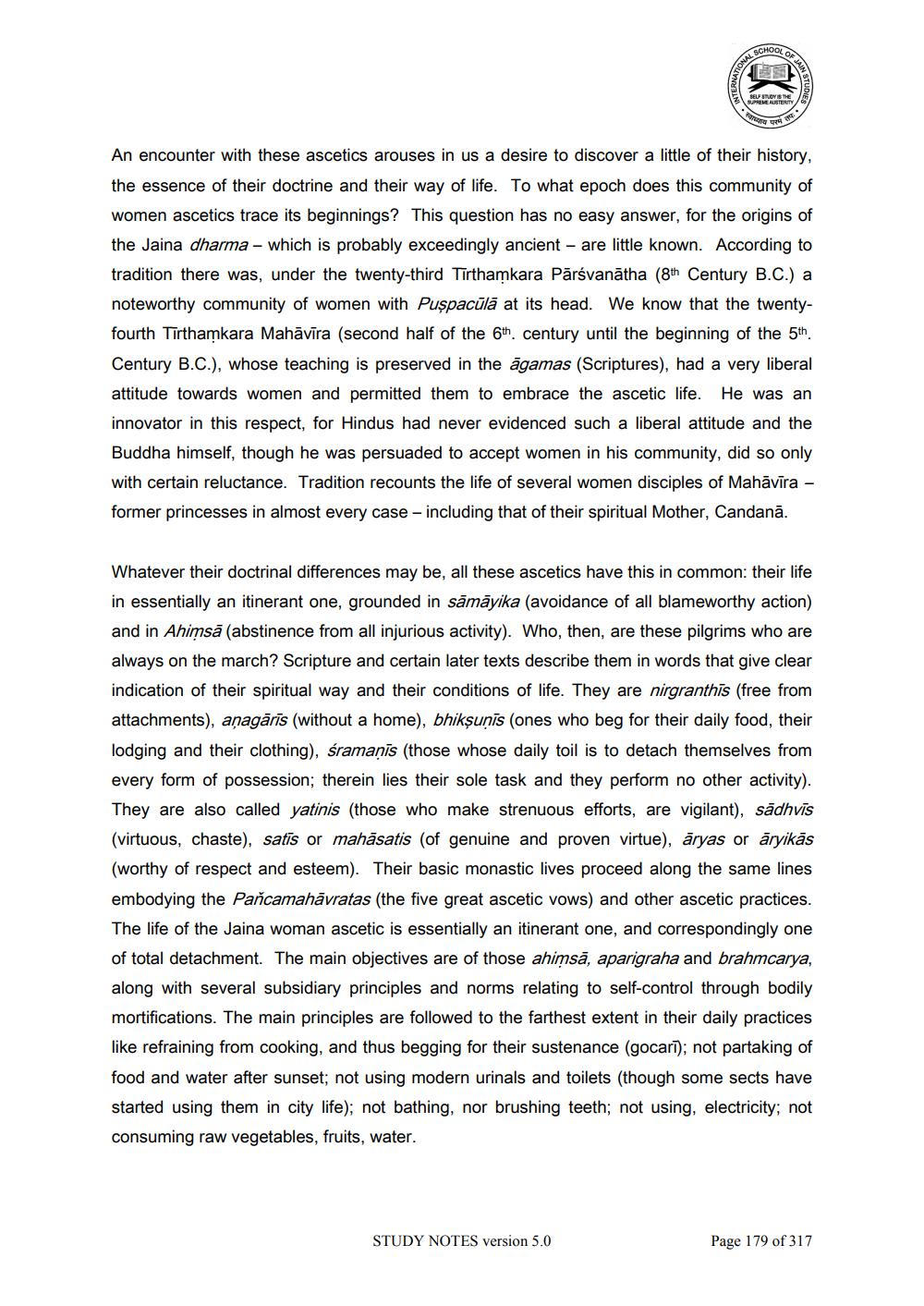________________
SCHOOL
OF
STUDY NOTES version 5.0
SELF STUDY IS THE SUPREME AUSTERITY
स्वाध्याय
An encounter with these ascetics arouses in us a desire to discover a little of their history, the essence of their doctrine and their way of life. To what epoch does this community of women ascetics trace its beginnings? This question has no easy answer, for the origins of the Jaina dharma - which is probably exceedingly ancient - are little known. According to tradition there was, under the twenty-third Tirthamkara Pārsvanatha (8th Century B.C.) a noteworthy community of women with Puspacula at its head. We know that the twentyfourth Tirthamkara Mahāvīra (second half of the 6th century until the beginning of the 5th. Century B.C.), whose teaching is preserved in the agamas (Scriptures), had a very liberal attitude towards women and permitted them to embrace the ascetic life. He was an innovator in this respect, for Hindus had never evidenced such a liberal attitude and the Buddha himself, though he was persuaded to accept women in his community, did so only with certain reluctance. Tradition recounts the life of several women disciples of Mahāvīra - former princesses in almost every case - including that of their spiritual Mother, Candanā.
Whatever their doctrinal differences may be, all these ascetics have this in common: their life in essentially an itinerant one, grounded in sāmāyika (avoidance of all blameworthy action) and in Ahimsa (abstinence from all injurious activity). Who, then, are these pilgrims who are always on the march? Scripture and certain later texts describe them in words that give clear indication of their spiritual way and their conditions of life. They are nirgranthis (free from attachments), anagāris (without a home), bhiksunis (ones who beg for their daily food, their lodging and their clothing), śramanis (those whose daily toil is to detach themselves from every form of possession; therein lies their sole task and they perform no other activity). They are also called yatinis (those who make strenuous efforts, are vigilant), sädhvis (virtuous, chaste), satis or mahāsatis (of genuine and proven virtue), āryas or ärikäs (worthy of respect and esteem). Their basic monastic lives proceed along the same lines embodying the Pañcamahāvratas (the five great ascetic vows) and other ascetic practices. The life of the Jaina woman ascetic is essentially an itinerant one, and correspondingly one of total detachment. The main objectives are of those ahimsa, aparigraha and brahmcarya, along with several subsidiary principles and norms relating to self-control through bodily mortifications. The main principles are followed to the farthest extent in their daily practices like refraining from cooking, and thus begging for their sustenance (gocari); not partaking of food and water after sunset; not using modern urinals and toilets (though some sects have started using them in city life); not bathing, nor brushing teeth; not using, electricity; not consuming raw vegetables, fruits, water.
Page 179 of 317




